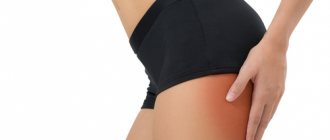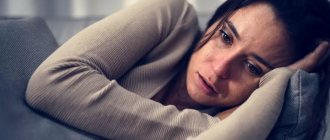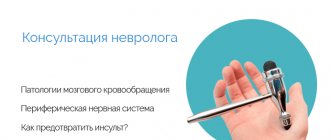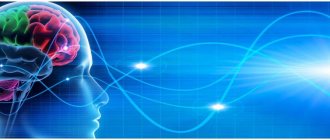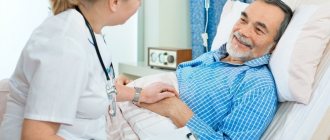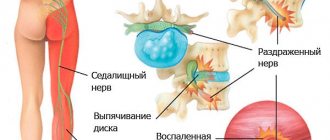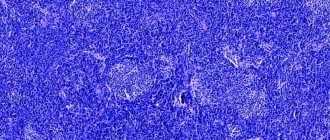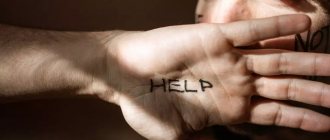Behavioral therapy in the treatment of overactive bladder and urinary incontinence
The International Continence Society (ICS) defines overactive bladder (OAB) as a condition in which the patient experiences a sudden urge to urinate that is difficult to control, often accompanied by frequent urination during the day and/or night.
OAB is not a disease, it is a complex of symptoms (syndrome), which in themselves are not life-threatening, but significantly reduce the patient’s quality of life. This diagnosis is established by excluding other possible conditions that have similar manifestations and require specialized treatment (for example, urinary tract infection).
According to modern data, about 16% of the adult population suffers from OAB. This disease occurs equally often in both women and men. However, in women, OAB is more often accompanied by urinary incontinence. The incidence of OAB and the severity of symptoms increase with age.
Today, there are many different treatments for OAB. According to the recommendations of the American Urological Association from 2012 (revision from 2014), all available treatment methods are divided into 5 groups depending on the ratio of benefits to the patient, as well as the invasiveness of treatment, the severity of possible complications and their reversibility.
The first line of treatment for overactive bladder is behavioral therapy. This type of therapy has no side effects, and its effectiveness is not inferior to therapy with M-anticholinergics, therefore it is recommended for all patients with OAB. However, to achieve maximum results, the patient is required to have the right attitude towards treatment, free time that the patient can devote to training, as well as periodic visits to a doctor or specially trained nurse for the purpose of correction and evaluation of the effectiveness of therapy.
“Behavioral therapy” is a collective term, it refers to a number of methods aimed at changing the patient’s habits or his environment. In most cases, these methods are used in combination with each other, which increases the effectiveness of therapy. There are two approaches to treating OAB using behavioral therapy. The first is to change bladder function by influencing urination patterns. In this case, a method called “bladder training” is used. In the second case, attention is paid to the pelvic floor muscles (exercises for the pelvic floor muscles to strengthen them and improve urinary retention, as well as teaching the patient techniques for suppressing the imperative urge to urinate).
Next, the main behavioral therapy methods used in the treatment of OAB will be presented.
Bladder training
The patient urinates at regular intervals. The initial interval is set based on the urination diary data and subsequently the interval between urinations gradually increases by 15-30 minutes.
*Bladder training is always combined with the technique of suppressing the imperative urge to urinate!
Suppressing the urgency to urinate
Against the background of an imperative urge to urinate, the patient makes rapid contractions of the pelvic floor muscles until the urge subsides. It is important to know that during an urgent urge you should not rush to the toilet. Motor activity against the background of an imperative urge only increases intra-abdominal and, consequently, intravesical pressure, which in turn strengthens the imperative urge. In addition, visual cues such as the bathroom or toilet can trigger urinary incontinence. During an imperative urge, you should sit down, if possible, relax the muscles of the body and perform a series of rapid contractions of the pelvic floor muscles aimed at suppressing the imperative urge. Only after the imperative urge to urinate has passed can you safely go to the toilet.
Exercises for the pelvic floor muscles
The patient performs 8-12 full voluntary contractions of the pelvic floor muscles. Each contraction is held for 6-8 seconds, after which the muscles relax. Rest between contractions is also 6-8 seconds. Upon completion of the exercise, 5-10 rapid contractions of the pelvic floor muscles are performed (without rest). This complex is performed 5 times a day.
Obesity
Based on clinical work, the positive effect of weight loss on urinary incontinence has been shown.
Smoking
To date, there are no studies proving the positive effect of quitting smoking on urinary incontinence. Nevertheless, this recommendation is quite logical: quitting smoking reduces the risk of developing bladder cancer. This recommendation is also appropriate in case of urinary incontinence, which manifests itself mainly when coughing.
Coffee
Consuming large amounts of caffeine contributes to the development of OAB.
Limiting fluid intake
This recommendation is appropriate for both patients with stress urinary incontinence and patients with OAB. In the first case, the positive effect is due to the fact that during physical activity, urine loss becomes significantly less when the bladder is not full. In the second, slower filling of the bladder associated with limited fluid intake leads to a reduction in the risk of involuntary contraction of the bladder muscle and, as a consequence, urgency.
*Applicable to patients with normal/high drinking regime. The drinking regime is established on the basis of a urination diary.
Reasons for development
The etiology has not been fully elucidated. Various pathological processes act as provoking circumstances, but there is no inflammation in the bladder; psycho-emotional factors play a decisive role. Among the patients, vulnerable emotional women with an unbalanced type of nervous system predominate. In men, this neurosis is rare. The appearance can be caused by:
- Gynecological diseases. Found in 40% of patients suffering from cystalgia. Most often, vaginal prolapse, inflammatory and tumor diseases are detected.
- Ovarian dysfunction. Often accompanied by hypoestrogenemia, causing metaplasia of the epithelium of the bladder mucosa. Urinary neurosis often manifests itself during pregnancy, with dysmenorrhea or with the onset of menopause.
- Tendency to allergies. Allergic reactions occur not only in the form of lacrimation, nasal congestion and other obvious symptoms. Some people experience reactions from internal organs, for example, allergic swelling of the detrusor neck when consuming certain foods.
- Other reasons. Risk factors include deterioration of blood and lymph circulation, operations in the pelvic cavity, abortion, neurogenic dysfunction, decreased immunity, sexual dissatisfaction, developmental defects and some individual structural features of the genitourinary organs.
In all of these situations, a focus of stagnant excitation occurs in the central nervous system with the development of psychosomatics. An unstable psychological state encourages a woman to overemphasize unpleasant sensations. As a result, the discomfort worsens and cystalgia develops. The immediate “breaking point” is stress, hypothermia, acute vaginitis or cystitis. A sedentary lifestyle and consumption of salty, spicy and spicy foods play a certain role.
Causes of frequent urination
Physiological causes of frequent urination, in addition to the nutritional factor (drinking plenty of fluids, a specific diet), include stress and hypothermia. Frequent urination is also observed in pregnant women, especially in the first and third trimesters. Taking some medications can also cause you to urinate more frequently.
In such cases, frequent urination is observed, as a rule, during the daytime and is temporary. As soon as the factor that caused it ceases to act, the frequency of urination returns to normal.
Frequent urination caused by diseases of the genitourinary system has a pathological nature. In most cases, the cause of frequent urination is irritation of the urethra and bladder neck, which have abundant innervation. Irritation can be caused by infection or be mechanical (in the case of urolithiasis or tumor). Normally, the nervous system should receive a signal from receptors in the neck of the bladder only in one case - if the bladder is full. But as a result of pathological irritation, the signal is given prematurely, and the urge to urinate occurs.
Frequent urination is caused by the following diseases of the genitourinary system:
:
- prostate adenoma;
- prostatitis;
- cystitis;
- urethritis;
- urolithiasis disease;
- weakness of the muscles of the bladder walls.
Frequent urination is also observed in diseases such as:
- diabetes. With diabetes, the patient feels thirsty, drinks more than normal, which leads to increased urination;
- cardiovascular failure.
Treatment of the disease
Therapeutic therapy for a urological disease such as cystalgia should have an integrated approach. Such patients are treated by a urologist, urogynecologist, neurologist, and psychotherapist. Treatment is prescribed in accordance with diagnostic data.
First of all, after examining the patient, establishing an accurate diagnosis and determining the cause that could trigger the onset of cystalgia, all actions will be aimed directly at eliminating the causes. It is also important to eliminate all etiological factors that may influence the development of the disease.
Particular attention should be paid to the condition of the genital organs, and all inflammatory processes should be completely eliminated. Treatment of all diseases of the genitourinary system is also important.
The patient is prescribed general restorative therapy, while most patients also need the help of a professional psychologist. Next, appropriate measures are taken to eliminate all the resulting congestion that manifests itself in the pelvic area. The most commonly prescribed medications are sedative medications, as well as painkillers and antispasmodics. It is important to remember that only a doctor can prescribe medications.
If the patient himself is of reproductive age, and decreased ovarian activity has been diagnosed, then medications for cyclic hormone therapy are prescribed. In this case, substances such as estrogens and gestagens can also be used. Novocaine blockades are also prescribed, due to which the effect of medicinal substances is enhanced.
The patient is also required to take vitamin supplements. In the event that a diagnosis of cystalgia has been made to an elderly patient, estriol is quite successfully used for treatment.
To normalize disturbed circulatory processes in organs that are located directly in the pelvis, the patient is prescribed special therapeutic exercises, and various methods of thermal influence are also beneficial.
In some cases, acupuncture is also used, which significantly reduces pain symptoms, while at the same time effectively combating urinary disorders.
Today, there are a number of surgical interventions. The doctor can also prescribe a mechanical effect on damaged organs, due to which cystalgia is effectively corrected. If the doctor has diagnosed a serious violation of the venous outflow, then surgical treatment is necessary - laparoscopic ligation or endovascular intervention on the pelvic veins.
If the patient has a hormonal dysfunction or age-related involutive changes in the genital organs (kraurosis, atrophic colpitis, prolapse of the vaginal walls, uterine prolapse), then hormone replacement therapy and surgical correction of genital prolapse are necessary.
In the treatment of cystalgia, special dietary nutrition is also important. The patient must completely eliminate all spicy foods from his diet, and also stop drinking a variety of alcoholic beverages. Optimizing your rest and work schedule is no less important; you should avoid frequent changes of sexual partners. Only if you follow all the doctor’s recommendations, will it be possible to cure cystalgia.
Cystalgia is an independent disease that does not have a morphological substrate, occurring with crises and remissions. The disease is severe and debilitating, often accompanied by mental trauma. Treatment of patients with cystalgia is sometimes forced to be carried out in a neuropsychiatric hospital.
When should urination be considered frequent?
Frequent urination
An adult normally produces 1.5-2 liters of urine. To do this, he has to visit the toilet 3-7 times a day. Urination in children is more frequent: in children of the first year of life - 12-16 times a day, from one to three years old - 10 times a day, from three to nine years old - 6-8 times. The range of indicators is quite wide. The number of times a person needs to go to the toilet depends on many factors. In particular, if you drink a large amount of fluid, you should expect that the need to urinate will increase. A number of products have a diuretic effect; such as, for example, watermelon, melon, cranberry, lingonberry, cucumber, coffee, alcohol. Eating them will likely increase the frequency of urination due to increased urine output.
It is not normal to have frequent urination with regular fluid intake and a stable diet. As a rule, urination more than 10 times a day in an adult is regarded as a pathology, but for such an assessment the discomfort experienced by a person when visiting the toilet so often is also of great importance.
Frequent urination is pathological in nature if one of the following symptoms is observed:
- constant urge to urinate;
- the amount of urine during urination is insignificant. Normally, an adult should excrete about 200-300 ml of urine at a time;
- burning or pain is felt during urination;
- urination interferes with the normal rhythm of life (work, travel, sleep).
Leukoplakia of the bladder and precancerous condition
Leukoplakia is characteristic of any mucous surface. In the disease, the outer epithelial cells that protect the bladder from the effects of uric acid are replaced by deeper squamous epithelium. As a result, the epithelium becomes keratinized and loses its protective ability, provoking chronic inflammatory processes.
The trigger for leukoplakia is an STI that is transmitted from the vagina or urethra. Women are 3-4 times more susceptible to the disease because they have a shorter urethra. In addition to genitourinary infections, cocci are the causative agent of the disease.
Women suffering from inflammation of the appendages, uterus, and kidneys are predisposed to leukoplakia. Exceeding the period of wearing an intrauterine device, hypothermia, frequent colds, and any factors that reduce immunity have a negative effect.
The symptoms of leukoplakia are similar to the symptoms of acute cystitis (sharp pain when urinating, heaviness in the pubic bone, frequent urge to urinate), which greatly complicates the diagnosis. Often the patient is unsuccessfully treated for cystitis, but her health only worsens.
The true cause is established only after a more thorough diagnosis. Cystoscopy allows you to visually see the characteristic signs of leukoplakia, and the diagnosis is confirmed by tests for STIs, a urine sample according to Nechiporenko, and a biopsy of the organ walls.
The disease is treated comprehensively: first, the infection is eliminated with the help of antibiotics, then the damaged epithelium is restored with special glycosaminoglycan drugs. If leukoplakia has caused the formation of sclerotic areas and loss of elasticity of the walls, physiotherapeutic treatment is carried out using laser, electrophoresis, magnetic and electric wave therapy.
The last resort is surgery - transurethral resection - removal of pathological tissue. Complications of leukoplakia include a decrease in bladder capacity due to loss of elasticity and decreased extensibility of the walls of the organ.
But the greatest danger is the degeneration of the epithelium into cancer cells. For this reason, any discomfort in the bladder area should not be ignored. An experienced urologist will immediately distinguish leukoplakia from cystitis and prescribe competent diagnosis and treatment.
Diagnostics
Diagnostic measures are carried out with the participation of a urologist, gynecologist, neurologist and psychotherapist. The purpose of a comprehensive examination is to exclude organic lesions of the urethra and bladder, accompanied by similar manifestations. For women, the condition of the genital organs is of great importance. During the survey they clarify:
- obstetric history, previous gynecological interventions;
- characteristics of sexual relations: constancy, pain, presence of orgasms, use of contraceptives;
- the nature of menstruation, previous or chronic diseases of the female reproductive system.
As part of an objective examination, a gynecological examination is performed to rule out urethral prolapse. Laboratory tests of urine and vaginal discharge are prescribed. The most informative instrumental technique is cystoscopy, during which the absence of inflammation and increased blood filling of the vessels are confirmed. The neurologist excludes neurogenic dysfunction. According to indications, ultrasound, CT and other studies are performed.
Comprehensive self-help program for paruresis
Goals of urodynamic study of the bladder and diagnostic methods
Naturally, a psychologist who has the appropriate qualifications should select psychotherapeutic methods and develop a program for getting rid of bladder neurosis. However, in some cases, a person can try to get rid of bladder neurosis on their own.
For some people, a program based on the well-known . So, in the case of a problem with difficulty urinating, you should start by compiling a ranked list of places to urinate: from the easiest to the most problematic. For example, most people with paruresis find it easiest to urinate alone at home. The most difficult situations are usually in crowded and noisy public restrooms. And also, you should find someone, perhaps a close friend or relative, who could support you.
The next idea is to start with the easiest places and work your way up to the hard ones:
- Ask your friend to stand as close to the toilet as possible so that you feel comfortable and safe while you try to urinate. Urinate for a few seconds and then stop for a few minutes.
- Ask a friend to stand a little closer to the toilet. Return to the toilet and urinate again for a few seconds and then stop.
- Keep practicing with your friend moving closer and closer to the toilet. This may take several sessions over a period of time.
- Choose a small, quiet public toilet (once you are comfortable with urinating at home) and then practice with a friend standing outside the toilet door.
- Use a friend to work through each step of the ranked list of hard-to-reach spots until you can successfully urinate in a crowded and noisy public toilet.
You can easily adapt this program for self-help with fear of “incontinence” and accompanying urges.
Symptoms
The clinical picture is quite monotonous, the triad of main symptoms includes pain in the perineum and bladder, urination problems and a feeling of discomfort in the urethra.
The pain syndrome is characterized by clear localization, irradiation to the sacrum, lower back and iliac region. The painful sensations are dull and can occur either in connection with sexual contact or the act of urination, or without it. Often long lasting, weaken after passing urine. Urinary disorders include increased frequency, pain, urgency, and a feeling of incomplete emptying of the detrusor.
The course is wavy, with periodic exacerbations that occur due to hypothermia, alcohol intake, diet disorders or constipation. There is an increase in the frequency of relapses in the autumn-winter period. Symptoms are usually mild or moderate, but their persistence over a long period of time gradually exhausts patients, further worsening their psychological state.
Prices
| Disease | Approximate price, $ |
| Prices for examination and treatment for testicular cancer | 3 730 — 39 940 |
| Prices for vaporization of prostate adenoma with a “green laser” | 16 050 |
| Prices for diagnosis and treatment of impotence | 1 320 — 50 000 |
| Prices for diagnostics of the genitourinary system in men | 5 630 |
| Testicular cancer treatment prices | 15 410 |
| Prices for the treatment of urolithiasis | 11 760 — 16 180 |
| Bladder cancer treatment prices | 21 280 — 59 930 |
| Prices for diagnosing prostatitis | 2 720 |
| Prices for diagnosing male infertility | 6 300 |
| Prices for prostate cancer treatment | 23 490 — 66 010 |
| Disease | Approximate price, $ |
| Prices for diagnosing migraine | 7 060 — 8 260 |
| Prices for diagnosing childhood epilepsy | 3 100 — 4 900 |
| Prices for brain shunting for hydrocephalus | 33 180 |
| Prices for treatment of Parkinson's disease | 58 600 |
| Prices for migraine treatment | 9 680 |
| Prices for the diagnosis of amyotrophic lateral sclerosis | 6 550 |
| Prices for diagnosing epilepsy | 3 520 |
| Prices for rehabilitation after a stroke | 78 300 — 82 170 |
| Prices for treatment of childhood epilepsy | 3 750 — 5 450 |
| Prices for treatment of multiple sclerosis | 4 990 — 17 300 |
| Disease | Approximate price, $ |
| Prices for diagnosis and treatment of ovarian cancer | 5 270 — 5 570 |
| Prices for diagnosing the causes of female infertility | 1 620 — 6 630 |
| Prices for cervical cancer treatment | 12 650 — 26 610 |
| Prices for treatment of uterine cancer | 27 550 — 29 110 |
| Prices for treatment of ovarian cancer | 32 140 — 34 340 |
| Prices for treatment of ovarian cysts | 15 560 |
| IVF prices | 14 200 — 23 340 |
